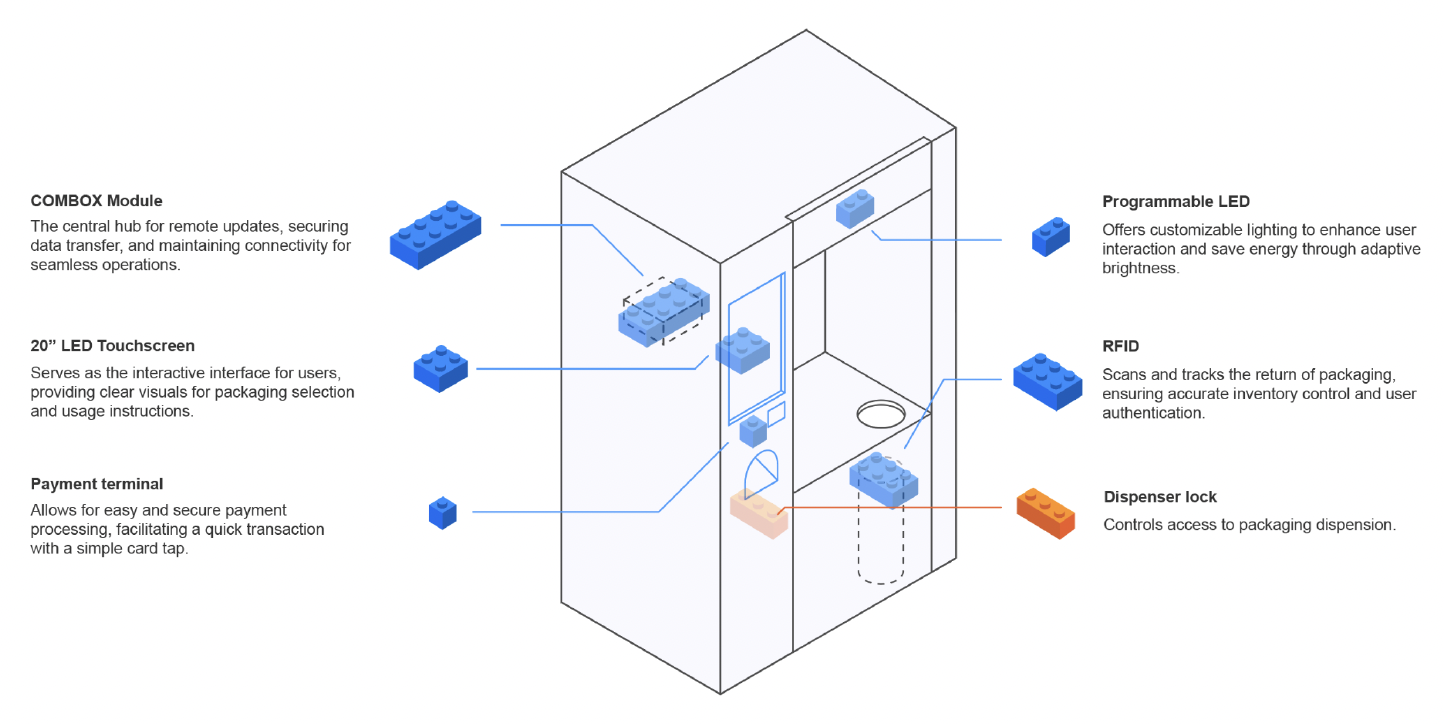Breaking the habit: How reusable cup technology is ending single-use waste at the office
In recent years, the European Union has taken major steps to reduce plastic pollution. The EU Single-Use Plastics (SUP) Directive (Directive (EU) 2019/904), effective since July 2021, bans or restricts single-use plastic products and mandates a shift toward reusable alternatives. The Netherlands has implemented this directive with stricter national measures, especially for office environments.
Since 1 January 2024, it is no longer permitted to offer single-use plastic cups, including paper cups with plastic coatings, for drinks consumed on-site. This applies to offices, canteens, hospitality venues, and other locations where beverages are consumed at the premises. Businesses must now provide reusable alternatives, and for takeaway drinks, they are required to offer a reusable option and apply a surcharge for any disposable plastic cups used.
These regulations are transforming the way workplaces think about everyday items like coffee cups—and they’re driving demand for practical, scalable alternatives that reduce waste without adding complexity.
The challenge
Intelligent Reusables approached us with a clear challenge: to develop the software for a smart dispenser system that would allow users to register via their phones and easily dispense reusable cups. The goal was to create a seamless experience that made reuse more convenient than single-use plastic or even bringing one’s own cup.
What we delivered
We built a full-featured reusable cup solution that connects users, smart machines, and operations teams. At the heart of this system is a mobile app developed in React Native, which allows users to quickly register, log in, and interact with the dispenser by scanning a QR code to receive a clean reusable cup. The app also supports push notifications to remind users about returns or provide system updates, and includes WhatsApp Business integration for direct communication and support.
The back-end was developed in Java, using a PostgreSQL database to handle user accounts, transaction history, and stock levels across all dispenser locations. We also built a back-office dashboard that gives Intelligent Reusables real-time insights into system usage, refill needs, and maintenance alerts, empowering their operations team to manage the service efficiently and proactively.
Each dispenser and return bin setup is powered by a Raspberry Pi running a Go-based application. This application handles local logic for dispensing cups, tracks inventory levels, and communicates with the cloud to keep everything in sync. The result is a responsive, real-time system that connects hardware and software seamlessly.

Real-world pilot: Success in Belgium
We conducted a pilot at a client location in Belgium for business validation; two dispenser and bin installations were deployed on site. The feedback from users was overwhelmingly positive. Many reported that they found the system more convenient than bringing and washing their own cups. They appreciated that it worked reliably, was easy to use, and aligned with their values around sustainability. The combination of convenience and environmental impact proved to be a compelling alternative to single-use options.
Enabling the circular office
With the enforcement of EU regulations and growing awareness about the environmental impact of disposables, workplaces are now seeking smarter, more sustainable solutions. Intelligent Reusables has created a system that not only complies with the latest legislation but offers a better experience for users. Our software plays a key role in enabling that system to scale—from pilot programs to broader adoption across offices and public spaces.
What’s next?
Following the success of the pilot, Intelligent Reusables is preparing for a wider rollout. The system is designed to scale easily, with a robust architecture that supports real-time monitoring, smart refill scheduling, and a frictionless user experience. We're proud to support their mission and excited to see this technology help more organizations reduce plastic waste at the source.
If you're building a sustainable product and looking for a technology partner to bring it to life, we’d love to hear from you.